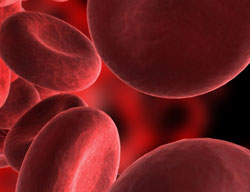Risks of Varicose Veins
There are several adverse consequences of untreated varicose veins, and their severity will vary from person to person depending on the circumstances. Many people who don't treat their varicose veins will experience continued symptoms of pain, fatigue and swelling of the legs or ankles. More advanced medical problems may include hyperpigmentation, lipodermosclerosis, venous leg ulcers, spontaneous bleeding, superficial thrombophlebitis, and a potentially life-threatening condition called deep vein thrombosis.

Blood that pools in the varicose veins is depleted of oxygen and nutrients. The veins also do not tolerate high pressure well and begin to allow red blood cells and fluid to leak into the tissues of the leg. The fluid leak causes ankle swelling. The red blood cells in the tissues cause chronic inflammation and the skin becomes dark and discolored. The medical term for the dark discoloration is hyperpigmentation. When the skin and the fat under the skin are inflamed for years, the tissues become woody and firm. The medical term for this woody, hard tissue is lipodermosclerosis.
A condition that may occur over time, when there is chronic venous insufficiency, is a venous leg ulcer. The ulcers due to varicose veins are painful and difficult to heal. Sometimes the ulcers cannot be healed until the backward blood flow in the veins is corrected.
Another possible consequence of untreated varicose veins is spontaneous bleeding from the varicose veins. As the skin over the veins becomes thin, eventually the vein can be exposed to the outside world and be easily injured by clothing, bedding, etc. The blood loss can be significant and is painless.
Superficial thrombophlebitis (ST) is an inflammation of a vein just below the surface of the skin. The cause of inflammation is not an infection. Rather, inflammation is due to decreased blood flow through the vein, damage to the vein and blood clotting. The features of ST include redness to the skin and a firm, tender, warm vein. Localized leg pain and swelling may occur as well.

Treatment of ST is directed towards reducing the inflammation. Aspirin or Ibuprofen are the drugs of choice. Compression with graduated support hosiery is important as well. Fortunately, ST is usually a benign and short-term condition. Symptoms generally improve in one to two weeks although the firmness of the vein may persist longer.
Deep vein thrombosis (DVT), unlike ST, can be associated with significant and serious medical problems. DVT is often first noticed as a "pulling" sensation in the calf of the lower leg, and it can be quite painful. Symptoms also include associated warmth, redness and swelling. The swelling often extends to above the knee.
Some patients are at higher risk for developing DVT. These include people with one or more of the following characteristics:
- Over 60 years of age
- Recent surgery
- History of prior DVT
- Prolonged immobility/paralysis
- Malignancy
- Blood Clotting Disorders
- Obesity
- Pregnancy and Postpartum
- Infection

When a diagnosis of DVT is made, anticoagulation treatment are often started. Anticoagulation prevents progression of the blood clot, breaks up the clot and prevents the clot from traveling to the lungs. If a clot travels to the lungs it is called a "pulmonary embolus" and the outcome can be fatal.
TO FIND A VARICOSE VEINS OR SPIDER VEINS CENTER AND DOCTOR NEAR YOU, VISIT VEINSonline.COM.